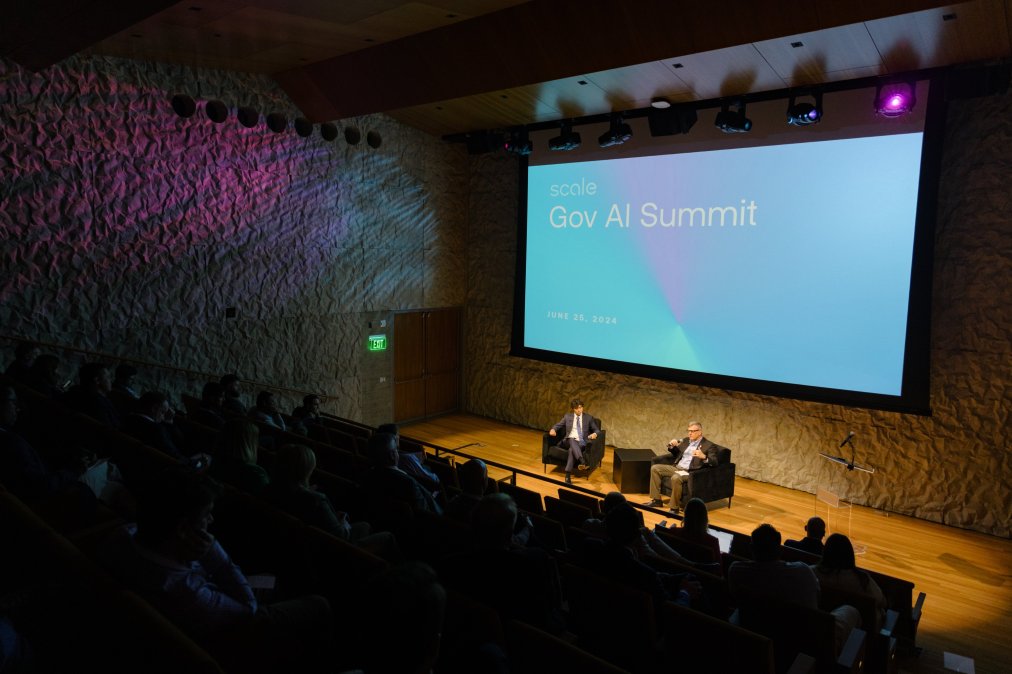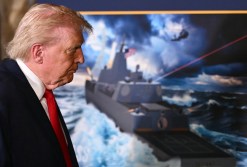Army Futures Command’s Gen. Rainey reflects on AI’s potential in modern warfare

The Defense Department must streamline data, requirements, procurement and more to prepare for rapidly developing, next-generation artificial intelligence and large language models that will likely transform global warfare and how the U.S. military fights in the years to come, according to the top general leading Army Futures Command.
“To say the period that we’re living in right now is disruptive would be like an epic understatement. Different people use different analogies, but I think what we’re witnessing right now is as significant as the nuclear arms race. Potentially, even the Industrial Revolution — that’s how big this period of time is, and that potential. We don’t use the words ‘revolutionary change’ very often in the military. But I think it clearly falls into that category,” Gen. James Rainey, Army Futures’ commanding general, said Tuesday at Scale AI’s government summit.
In a discussion moderated by the startup’s founder Alexandr Wang, Rainey reflected on ways the military is adapting to the quickly evolving advantages and limitations posed by AI in modern warfare.
“I don’t personally think we have a technology problem — I think we have a tech adoption problem,” he said.
Futures Command is the Army’s key innovation-pushing and modernization-enabling arm. Rainey took the helm in 2022.
“I am not a data scientist or expert by any means. I am not an acquisition professional. I’m an infantry officer with a lot of experience deploying and running big formations,” he told Wang during the event.
Pointing to his unique “warfighter lens,” Rainey noted that it is critical to recognize that, for the DOD, AI is not simply about intelligence, surveillance and reconnaissance, logistics, or targeting.
“The real potential for military application of artificial intelligence is to empower our commanders — the men and women who lead our formations. And how do we bring the power of AI to bear to let them do three things: make more decisions, make better decisions and make faster decisions?” Rainey said.
“Nobody’s going to win the war between two nuclear-equipped superpowers, right? So I think the real potential is to confront China with that capability, and through that lens,” the general said.
Rainey’s tenure as commander comes at a time when AI and machine learning present seemingly unprecedented potential to enable and empower military chiefs and the teams and operations they lead.
“The amount of things that are knowable that our commanders do not know is staggering. And I think we could rapidly [apply AI for that] right now — because you don’t have to be as perfect about that as you do to drop a bomb into a room. You almost have a level of certainty to comply with the law of armed conflict,” the general noted.
Rainey described how he’s gone “back and forth to Iraq and Afghanistan” about seven different times in his military career so far, which isn’t uncommon for other military insiders around his age. Doing so has exposed him to those scenarios where he experienced such a knowledge gap, one faced by the U.S. military’s “men and women going places all over the world right now.”
“The amount of things that they don’t know that are absolutely knowable about the human beings that live there about the terrain. You know, Russia decided to invade Ukraine based on an assumption that the ground would be frozen, because it was always frozen that time of year — but it didn’t freeze. Absolutely unknowable piece of information. So I think we can use large language models, AI and machine learning to rapidly capture that,” Rainey told Wang.
But as generative AI and other connected, advanced capabilities come into fruition and pose new opportunities for the U.S. military, they’re also ushering in much more unpredictability and uncertainty through risk — particularly associated with how adversaries might apply them.
“That’s one of the challenges for us, because I spent most of my career trying to hide from the enemy — like, striving to not be observed and use terrain and hide, like in silence so that the enemy doesn’t know where I’m attacking from there. But it’s just different with software,” Rainey said.
China, he added, is now coupling “ubiquitous sensing, plus precision-guided munitions, with huge stockpile magazine depth.” That means U.S. personnel will now have to essentially assume enemies will be able to see them and therefore have to contest their ability to understand what they observe.
Other impending obstacles AI presents for Futures Command, the Army, and the larger DOD enterprise involve data, which underpins the technology.
“Right now, if one of you came up to me and said, ‘Hey, we have a large language model where we’ll scan an area and find all the Russian tanks,’ — we could not do anything with that because of the state of our data in the Army and in the department is just ridiculous. I mean, it’s all over the place,” the general explained.
In that sense, his command is looking to partner with more companies that can help get to a state where all of its data is usable and accessible so that it can pave the way for next-gen algorithmic warfare.
Among other topics during their onstage chat, both he and Wang agreed that the department must also confront challenges related to requirements and procurement frameworks to become a software-enabled organization.
“We’ve got the world’s best acquisition folks, but they’ve got to get faster. They need fiscal agility, we need some help from Congress. … But we can’t we can’t buy radios or buy server stacks. We have to add funding lines that are for command and control and set what the appropriate oversight would be able to rapidly move money from one system to another,” Rainey said.
Recognizing the complex possibilities that accompany these and other challenges, however, the Futures commander still said he has hope that America’s values and principles will help it prevail.
“Certainly, it’s the most disruptive and dangerous time in my lifetime — at least since World War II, for sure. But I am an optimist. I think that this country is still a diverse country. I believe it’s the freest place in the world. I believe that the overwhelming majority of the people — our teammates, our citizens — believe that and are willing to sacrifice for that. So we need it. We need industry to stay with us,” Rainey told the audience. “So I would just probably end there — just asking everybody to stick with the department.”






